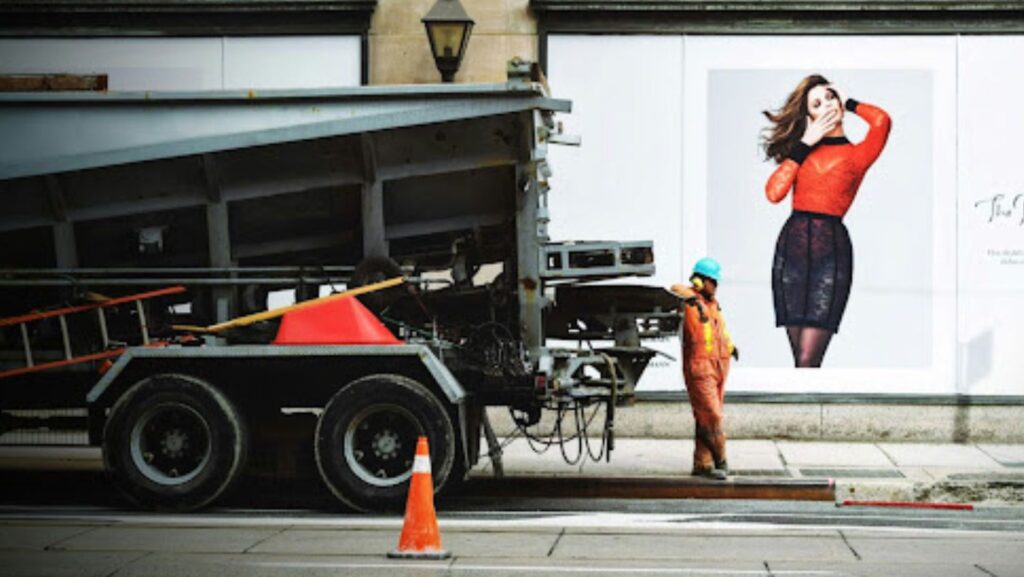Minimalist workwear is gaining traction in the quest for a safer workplace. By focusing on essential, functional clothing, businesses can enhance safety while promoting a streamlined aesthetic. This approach not only simplifies choices for workers but also ensures that safety standards are met without unnecessary distractions.
In the world of minimalist design, less is often more. This principle can be applied not only to home décor but also to essential workwear. Streamlined, efficient, and functional protective clothing helps keep workers safe without excess bulk or unnecessary features. The Bright Gear range is a perfect example, offering sleek, high-visibility workwear that combines simplicity with safety. For those who appreciate minimalism, even in industrial environments, having practical yet stylish gear can make all the difference.
Emphasizing simplicity in workwear can also positively impact team morale and productivity. When employees feel comfortable and confident in their clothing, it reflects on their overall performance. Companies that embrace minimalist workwear are taking proactive steps toward creating not just a safer workspace, but also a more engaged workforce.
The Importance of Minimalist Workwear
Minimalist workwear plays a critical role in enhancing safety and efficiency in various work environments. Reducing complexity in garments allows for better movement and comfort, which directly impacts job performance and safety.
Benefits of Reduction in Workwear Complexity
Simplified workwear reduces the number of layers and components, which can minimize distractions. This focus on essential items leads to fewer potential hazards, such as snagging or entanglement.
Additionally, minimalist designs often incorporate high-quality materials, which provide durability without excessive bulk. This balance ensures that workers remain comfortable throughout long hours, improving morale and productivity.
Fewer elements in workwear create a straightforward choice for employees. The ease of getting dressed simplifies the start of the workday, helping everyone focus on tasks rather than wardrobe concerns.
Impact on Workers’ Mobility and Safety
Mobility is crucial in many industries. Minimalist workwear often features streamlined designs that allow for a greater range of motion. This freedom is particularly vital in roles that require bending, lifting, or quick movements.
In high-risk environments, such as construction or manufacturing, less obstructive clothing can enhance safety. Workers can react swiftly to unforeseen circumstances without being hindered by bulky garments.
Moreover, minimalist workwear is often designed with safety in mind, incorporating reflective materials or additional protective layers in strategic locations. This ensures that while clothing is simplified, essential safety features remain intact, providing peace of mind for both the workers and their employers.
Design Principles for Minimalist Safety Apparel
Minimalist safety apparel focuses on essential features that enhance protection while maintaining comfort and ease of movement. The right materials and ergonomic design principles play crucial roles in creating effective workwear.
Material Considerations for Durability and Protection
Selecting appropriate materials is vital for minimalist safety apparel. Fabrics should resist tearing, abrasion, and environmental elements. Common options include:
- Polyester: Known for its strength and resistance to shrinking or stretching.
- Nylon: Offers high durability and excellent abrasion resistance.
- Cotton Blends: Provide comfort while incorporating synthetic fibers for added strength.
Each material should meet or exceed safety standards relevant to the specific workplace environment. Additionally, moisture-wicking properties help maintain comfort during prolonged wear. A balance between weight and protection is important to ensure the workwear is both lightweight and functional.
Ergonomic Design for Ease of Movement
Ergonomic design enhances the functionality of minimalist safety apparel. It ensures that workers can perform their tasks efficiently without restrictions. Key aspects include:
- Fit: Tailored fits that closely follow body contours minimize excess fabric that can lead to accidents.
- Stretch Panels: Allow for flexibility in critical areas, such as joints.
- Strategically Placed Seams: Reduce chafing and discomfort during movement.

These design elements contribute to the overall usability of the apparel. By prioritizing comfort, workers can maintain focus on tasks rather than adjusting ill-fitting clothing. This approach leads to a safer and more effective work environment.
Innovations in Personal Protective Equipment
Recent developments in personal protective equipment (PPE) focus on enhancing safety while improving comfort and usability. Two significant areas of innovation include advancements in lightweight safety materials and the integration of smart safety features.
Advancements in Lightweight Safety Materials
New materials are transforming PPE by reducing weight without compromising protection. Fabrics like Dyneema and Kevlar are being used in various applications, providing high tensile strength and durability.
These materials allow for thinner and more flexible designs, which enable better mobility. For example, safety vests and gloves now utilize these materials, offering protection without the cumbersome bulk.
Additionally, advancements in breathable membranes ensure comfort during prolonged use. This innovation minimizes overheating, leading to better concentration and performance on the job. Enhanced comfort and mobility are crucial for promoting consistent use of PPE.
Integration of Smart Safety Features
Smart technology is being incorporated into PPE, providing real-time data and alerts to improve workplace safety. Wearable devices like helmets and vests are being equipped with sensors that monitor vital signs, environmental conditions, and potential hazards.
These devices can communicate with each other and send alerts to workers about dangerous conditions. For instance, a smart helmet can provide notifications about nearby equipment or machinery, reducing the risk of accidents.
Furthermore, augmented reality (AR) features can assist workers by providing visual guidance during complex tasks. This enhances both safety and efficiency by giving real-time information without distracting from the job at hand.
Implementation Strategies for Organizations
Organizations looking to integrate minimalist workwear must focus on effective training and cost assessment. Implementing these strategies will streamline employee safety and maximize investment returns.
Training and Education for Adoption
Training employees on the benefits and proper use of minimalist workwear is crucial. A structured program can address aspects such as:
- Understanding Safety Standards: Educating employees on relevant safety regulations helps ensure compliance.
- Proper Usage: Instruction on wearing minimalist workwear correctly can enhance its effectiveness.

Interactive workshops can also improve engagement. Practical demonstrations allow employees to experience the comfort and flexibility of minimalist designs. Feedback sessions could provide valuable insights into employee perceptions, paving the way for adjustments.
Educators should emphasize the efficiency of minimalist workwear. Establishing a culture of safety will encourage employees to embrace the new apparel.
Cost-Benefit Analysis of Minimalist Workwear
Conducting a cost-benefit analysis assists organizations in understanding the financial implications of adopting minimalist workwear. Key factors include:
- Initial Investment vs. Long-Term Savings: While initial costs may seem high, the long-term savings from reduced accidents can be substantial.
- Increased Productivity: Minimalist workwear offers enhanced comfort, potentially improving employee output.
A table can illustrate the costs against predicted savings, aiding decision-making.
|
Item |
Estimated Cost |
Projected Benefit |
|
Initial Purchase |
$XX per item |
Reduced injury costs |
|
Training Sessions |
$YY total |
Improved safety culture |
Organizations should review these metrics regularly to assess the ongoing benefits of the new workwear system.
